
The purpose of this study was (1) to develop a archery lesson using forced connection method-sportcasting for cultivating collaborative problem-solving competencies, and (2) to apply and to examine the responses of students after physical education(PE) lesson. A archery lesson of Understanding-Performance-Appreciation step was developed according to LfPE(Lee, 2014) using backward curriculum design. Participants were tenth grade students (N=148) in a high school. Open-ended question used to collect the data. The analysis of data indicates that students expressed features in lessons. Six features are (a) 朋友信之, (b) 君子不器, (c) 能竭其力, (d) 觀其所由, (e) 溫故知新, (f) 思而不學. In-depth interviewers were carried out for further analysis of the answers to the questionnaires. The results are as follows. First, 朋友信之 means lesson cultivating collaborative problem solving competencies. Second, 君子不器 means pleasant and funny lesson. Third, 能竭其力 means lesson cultivating self management ability. Fourth, 觀其所由 means lesson cultivating appreciativeness for archery. Fifth, 溫故知新 means lesson improving the status of PE teacher and school. This study concluded that a archery lesson generated fun and interest for students. Implication for developing lesson using LfPE, utilize and transform forced connection method-sportcasting in PE were discussed.



Sportscasting in Physical Education (Lee, 2011) is a class activity that students simulate sports broadcasting (e.g., students report, analyze, and comment on game play). It encourages problem solving (PS) learning for students. Scaffolding is the support with the intention of helping the student achieves his/her learning goals and contributes to problem solving. However, limited studies have examined if sportscasting with scaffolding is effective instructional strategies for PS. The purpose of this study was to examine effects of sportscasting with scaffolding on PS abilities, and on academic achievement. Participants were 46 college students. The static-group comparison design was used: an experiment group (N=26) with supportive scaffoldings (e.g., conceptual explanation, terminology dictionary, visual materials) and a control group (N=20) with reflective scaffoldings (e.g., organizing the environment, using appropriate cues to guide behaviors, and modeling). The results revealed that students in reflective scaffoldings had higher PS abilities than students in supportive scaffoldings. However, two groups were not statistically different in academic achievement. Sportscasting with instructional scaffolding promote a deeper level of cognitive skills and male students performed better than female students. The effective scaffolding types (Lewis, 2010) for sportscasting were discussed to help students to foster PS skills.

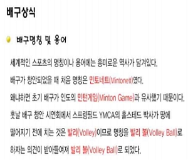
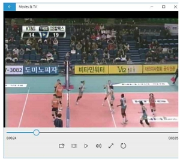
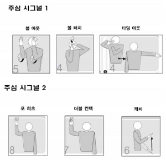
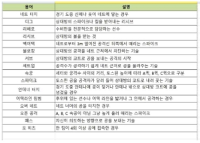
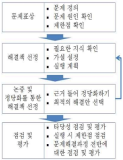
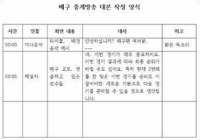

Purpose The purpose of this study was (1) to develop and to apply the PE classes based on Sportscasting Model on Creativity and Character and (2) to analyze the effects of PE classes on Creativity and Character. Methods Participants were 10th high school students(N=172) who had not experienced PE classes on Sportsasting Model. Data were collected using An Integrated Creativity Test(Lee & Lew, 2012), open-ended questionnaires and in-depth interviews with students. The data were analyzed through paired samples t-test and qualitative content analysis. Results Results showed that (1) Table-tennis and volleyball lessons on Sportscasting Model were developed and applied, and (2) significant differences were observed in creative thinking and creative personality of students’ creativity scores after lessons. And 14 creativity factors and 10 character factors were drawn from the analysis of questionnaires and interviews. Conclusion And to conclude, Sportcasting Model is efficient in developing creativity and character. Discussions were provided in terms of the development and application of PE classes based on Sportsasting Model and the effectiveness of Sportscasting Model.



Purpose Highly popular these days, eSport is inviting increasing scholarly attention and research. Scholarly work on eSport, however, remains focused on whether eSport is a “real” sport, that is, its sporting qualities and status, excluding ethical issues. This paper analyzes ethical issues about cognitive enhancement drugs often associated with eSport in order to suggest guidelines for resolving these issues. Methods First, environmental features of eSport are examined to find out types of cheating in eSport, as well as the ways eSport athletes are exposed to drugs. Next, ethical issues of cognitive enhancement drug use and why they are important are discussed, drawing upon multiple scholars. Last, this paper argues that the ban on drug use conventionally implemented in sport is not appropriate to eSport due to the characteristics of eSport. The paper concludes with possible future approaches to this issue. Results The ban lists administered by ESIC and WADA would not work for the need of eSport athletes and even run a risk of stunting the growth of eSport industries. It is thus important to think up an appropriate drug-related policy for eSport. Preemptive education for eSport athletes is also required to promote the ethical consciousness and judgment regarding drug use. Conclusions Insofar as eSport’s huge popularity leads to the increased status of eSport athletes, thereby exerting much influence on young people, ethical questions about eSport, drug use in particular, need to be urgently discussed for the sake of eSport’s wholesome development.

Purpose The purpose of this study was (1) to develop and to apply flipped learning strategies in Physical Education(PE) classes based on Sportscasting Model and (2) to examine the responses of students after PE lesson. Methods Participants were 10th high school students(N=216, male=115, female=101) in high school. Instruction strategies of flipped learning was developed after theoretical investigation, and the unit plans for curling and instructional materials were developed and applied. Open-ended questionnaires and in-depth interviews were used to collect the data. Qualitative content analysis combined with of structures in lesson was used to analyze the data. Results Results showed that (1) 11 instruction strategies of flipped learning were developed, (2) and the unit plan combining out-of class activities and in-class activities organically based on Sportscasting Model and instructional materials for unit of curling were developed and applied. In step of sportscasting, forcing relationship method-sportscasting based on the survey of students was developed and applied. (3) And 31 factors of Sportscasting Model and 15 factors of flipped learning were drawn from the analysis of questionnaires and interviews. Conclusion And to conclude, this research has a value of early study to develop and apply instruction strategies of flipped learning, the unit plan and instructional materials for combining Sportscasting Model with flipped learning organically. Discussions were provided in terms of the development of flipped learning applied in PE classes and responses of students.


Purpose This study was to investigate the effect of various motor leaning techniques which were applied on the youth soccer training program. Methods 12 elementary soccer players and the director of R youth soccer team have participated in the study. The expertise level of youth soccer team were ranged from beginner to advance. To investigate the effect of new soccer training program we adopted a methodology of action research. We first analyzed the problems of original youth soccer program and reconstructed the training program considering of individualized characteristics. The 3 main problems of original soccer program (1. feedback provisions 2. difficulty of task level 3. time distribution of training) have been reconstructed by four motor learning experts. For the data analysis, several qualitative analyze techniques were conducted to observe player’s improvements. Results First, participants had a better understanding on proper motion of shooting and lifting skills from the guidance techniques. Second, utilizing the personal skills and team cohesion have been improved by the modified rules and space competition. Third, the ability of active problem solving have been improved from the self-learning environment. Forth, the player’s confidence level have been improved by eliminating performance outcome. Conclusions From the aspects of variety circumstances in sport education field, the comprehensive motor learning program should be developed and applied.
